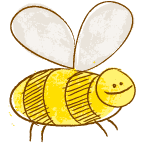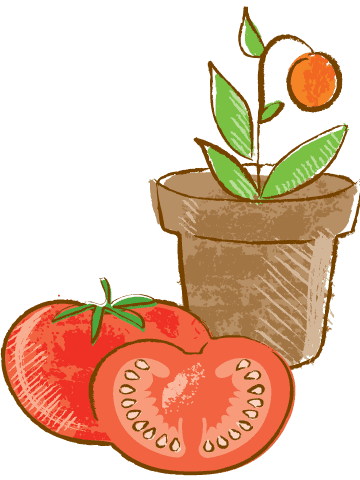The Carter School’s garden is a sensory delight for any student.
Mushroom-shaped buttons trigger water features, strategically positioned throughout the garden, that spray a gentle, calming mist. Easy-to-reach raised beds in the “sensory garden” overflow with different textures of plants and aromatic herbs. The “rainbow walk” section features colorful plants, each growing next to a matching bin filled with items of the same color.
These unique and interactive features are especially valuable to students at The Carter School, all of whom have disabilities and complex health needs.
“Our garden is 100% handicap accessible and was designed specifically for our student population,” explains Special Needs Teacher Kimberly Kulasekaran. “Most of the students are in wheelchairs, and many can get out of their chairs to use walkers, standers or adapted bikes. If you could just see their faces light up when they go out there, it’s truly incredible.”
The innovative garden was originally designed by an architect in 2005 and had a major makeover in 2015. It provides opportunities for disabled students to have sensory experiences, learn, practice and build on specific skills.
“We integrate the garden into the curriculum by giving the students opportunities to practice all of the skills they are learning inside their classrooms, in the outdoor classroom or sensory garden.” Kimberly explains. “One example is a student who is wheelchair bound, but enjoys riding an adapted bike throughout the garden. She practices communication skills to request a ride in the garden, and strengthens her muscles. Other students are working on fine and gross motor skills to reach and grasp objects appropriately. They have ample opportunity to practice this while scooping dirt and planting seeds in the garden. On beautiful days, we also have morning meeting, music and art classes outside.”
"My son, Antero, loves the beauty and diversity of the plants, and the joy of watching them grow,” says parent Margarida Semedo.
"My son, Antero, loves the beauty and diversity of the plants, and the joy of watching them grow.”
Of course, food grown in the garden is used for many other experiences with the students.
“Some of our students can eat by mouth and have enjoyed munching on the tomatoes, while others can have vegetables blended into their lunches,” Kimberly says. “This is a fantastic way to introduce fresh food into our students' diets. If we have an abundance of produce, we also send some home to our students’ families.”
The entire trans-disciplinary teaching team, which includes occupational and physical therapists among many others, utilizes the garden almost every day for student activities and programming.
Even with full participation from staff, as with any garden, ongoing maintenance has been a challenge at times. Partnerships have been the key to keeping the garden going over the years.
In 2015, a Whole Kids Foundation Grant funded critical supplies, plants and other items needed for repairs and enhancements.
Another partner, Green City Growers, provided soil testing, gardening education and guidance so newer staff members and parents could take more of the garden’s care into their own hands. They learned about things like beneficial insects, soil quality, identifying weeds and proper placement of various plants.
The Carter School also has engaged the help of Northeastern University to help with landscaping and maintenance. Another nearby university designed a shade structure, and is donating raised planters.
Thanks to these coordinated efforts, the students have frequent positive outdoor experiences that would otherwise be unlikely—and in some cases impossible.
“Most of our students live in the city, and very few of them have outdoor spaces of their own,” Kimberly says. “This garden is like their little slice of heaven.”
Favorite Features for a Sensory Garden
Visual
- colorful flowering plants: sunflowers, wildflowers, etc.
- greens of varying textures and colors: rainbow chard, cabbages, spinach
- vines and trailing plants
- bright and colorful veggies: peppers, eggplant, squash
Aroma
- herbs: especially lavender, lemon verbena, oregano, rosemary, marjoram
- chocolate cosmos
- curry plant
- honeysuckle
- gardenia
Taste
- herbs: especially basil, mint, rosemary
- chives
- wild strawberries
- edible flowers: nasturtium, marigold
- veggies of any kind!
Texture
- silver sage
- lamb’s ear
- Jerusalem sage
- moss
- monkey grass
Sounds
- grasses that rustle in the wind: fountain grass, Mexican feathergrass, etc.
- bamboo
- any flowering plants that attract buzzing bees and chirping birds
- gravel, wood chips, seedpods and other crunchy materials on walkways
- water features such as fountains, misters, etc.



